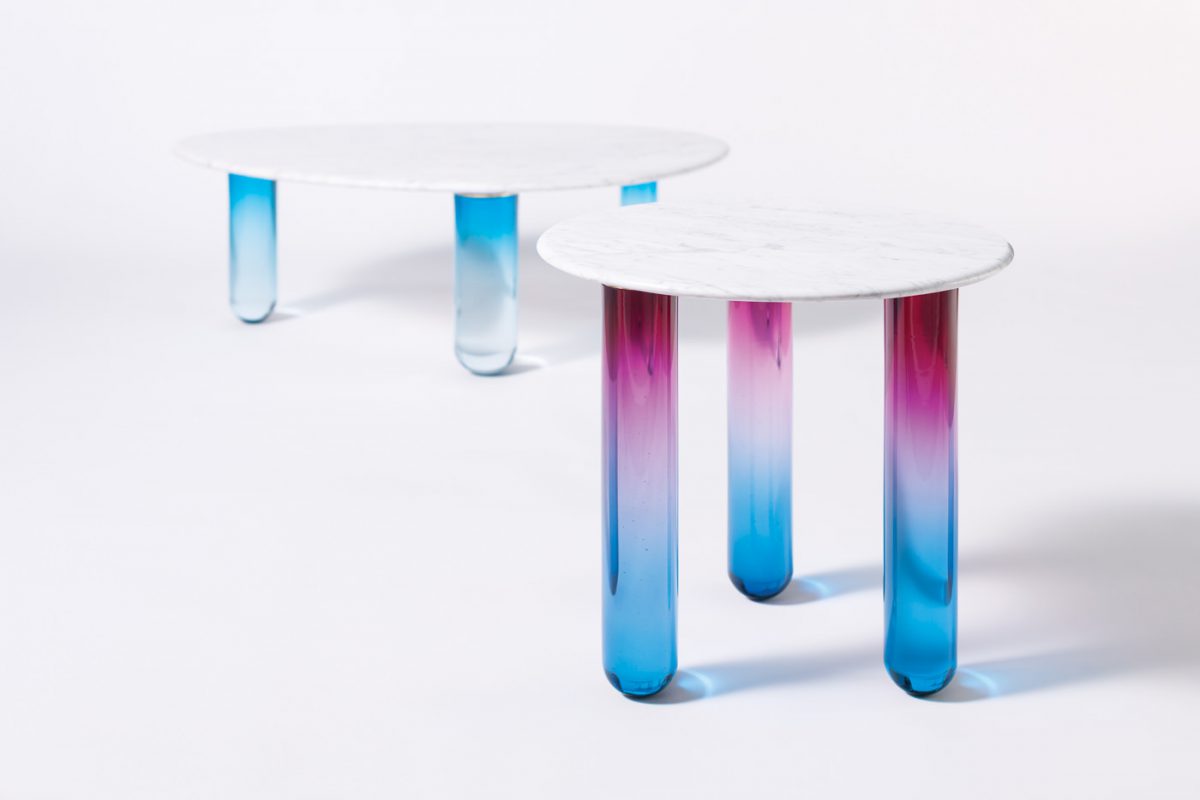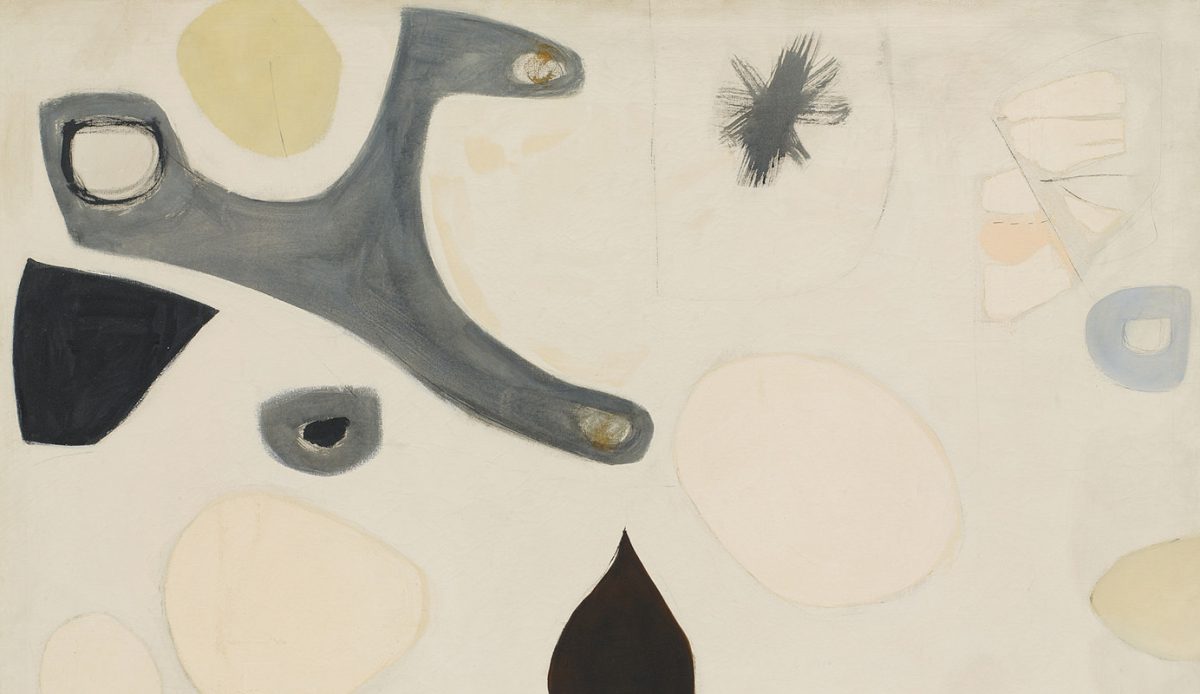MOCA PACIFIC DESIGN CENTER
(May 28 – August 14, 2016)
In a digital era that knows full well not to trust the images seen on the Internet, or even in person, it’s expected that we might approach photographs with a hint of reserve. How much of what we see is “true” to the extent that it looked just that way when the photo was taken? How much was constructed afterward?
Much of the literature surrounding the photographic work of Barbara Kasten focuses on the question of veracity. Viewers must be reminded, lest they forgot or are encountering Kasten’s work without knowing her process, that her images are not Photoshop collages. Stages looks not only at Kasten’s photography but also at her overall production and the way in which she plays with the world’s stages—its outdoor spaces and natural forms—and creates her own by meshing her work with dance productions and carefully constructing images through her own elaborate staging.
Her Architectural Site series takes architectural spaces in cities like Los Angeles and transforms them into centers of bold colors and dizzying reflections. To achieve this, she controlled each element of the image and transformed the space into something new. “When I took my studio process to site specific architectural locations, the production grew to cinematic proportions,” said Kasten. “The Architectural Site series needed to be photographed overnight with a professional crew who had the experience to set up the lighting necessary on that scale. I worked closely with a six to ten member team, all working to create my vision.”
Kasten acknowledges that growing up in Chicago probably helped her develop an interest in architecture. Stages was previously exhibited at the ICA Philadelphia and its current iteration in Los Angeles is like a journey that’s come full circle—some of the photographs in the Architectural Site series feature locations such as the MOCA Grand Avenue site in downtown L.A. “My 10 years in Los Angeles was a very important time in the beginning of my career,” said Kasten. “It was the transition period from textiles and painting to photographic experimentation. It seemed like the natural location [for me] to return to photograph the important architecture of the time. And now it is great to acknowledge my close connection to Los Angeles with the exhibition.”
Her Construct series follows the same methods of production and theatricality. In these bold images, Kasten employed everything from gels to backdrops to wood props. These scenes in particular seem like they might have been manipulated in Photoshop, but Kasten simply made intentional choices to achieve the right effect.
Much of the exhibition’s wall text focuses on the themes of the tactile and the optical. Her Photogenic Paintings seduce the viewer by capturing the essence of texture so convincingly. In taking them in, the viewer might feel the urge to reach out and touch them. The cyanotype prints on BFK Rives paper look more like undulating pieces of fabric than like photographs.
Stages also features Kasten’s artistic practice in other media besides photography. Her mid-1960s work considers the art of craft. In 1971, Kasten worked with sculptor Magdalena Abakanowicz in Poland through a Fulbright-Hays Fellowship. Seated Form considers the imprints the human body leaves behind, showing the viewer three different chairs with textiles in varying shapes on top. Photographs on the wall show a female body in various positions with the chair. Here, the architectural forms come through in the shapes and swells of the both the body and the chair. “I am happy that the book and the exhibition show that I have been involved in interdisciplinary mediums throughout my career,” said Kasten.
For this version of Stages, Kasten also created a site-specific piece, a projection of floating cubes that spins on a corner wall of the museum, changing colors as the viewer watches. At different turns, the projections shift, becoming two-dimensional and then three-dimensional again.
Kasten established a great synergy with the Los Angeles curatorial team. “Bennett Simpson is an insightful, creative and experienced curator who was pleasure to work with,” said Kasten. “He considered my opinions and those of Alex Klein, the originating ICA Philadelphia curator of Stages for every step along the way. We had an excellent collaborative experience in creating an interesting interpretation of the show in the unique space of the MOCA PDC.”
Commenting on the nature of abstraction in an increasingly digital age, Kasten emphasized that what comes first is perhaps not the medium but the content. “The digital process is a technique that can be used to affect content but does not define photography,” Kasten said. “There are still many ways to use photographic properties in making art. In fact, the digital technology may be inspiring more mixed media and experimentation than before.”
 Barbara Kasten Architectural Site 7, July 14, 1986 60 x 56 Inches, Cibachrome. Location: World Financial Center, New York, NY. Architect: César Pelli. Courtesy of the Artist.
Barbara Kasten Architectural Site 7, July 14, 1986 60 x 56 Inches, Cibachrome. Location: World Financial Center, New York, NY. Architect: César Pelli. Courtesy of the Artist. Barbara Kasten Scene III, 2012 Archival Pigment Print. 53.75 x 43.75 Inches. Courtesy of the Artist.
Barbara Kasten Scene III, 2012 Archival Pigment Print. 53.75 x 43.75 Inches. Courtesy of the Artist. Barbara Kasten Construct VIII, 1982 10 x 8 Inches, Polaroid. Courtesy of the Artist
Barbara Kasten Construct VIII, 1982 10 x 8 Inches, Polaroid. Courtesy of the Artist Barbara Kasten Photogenic Painting, Untitled 21, 1975 30 x 40 Inches, Cyanotype. Courtesy of the Artist.
Barbara Kasten Photogenic Painting, Untitled 21, 1975 30 x 40 Inches, Cyanotype. Courtesy of the Artist. 








